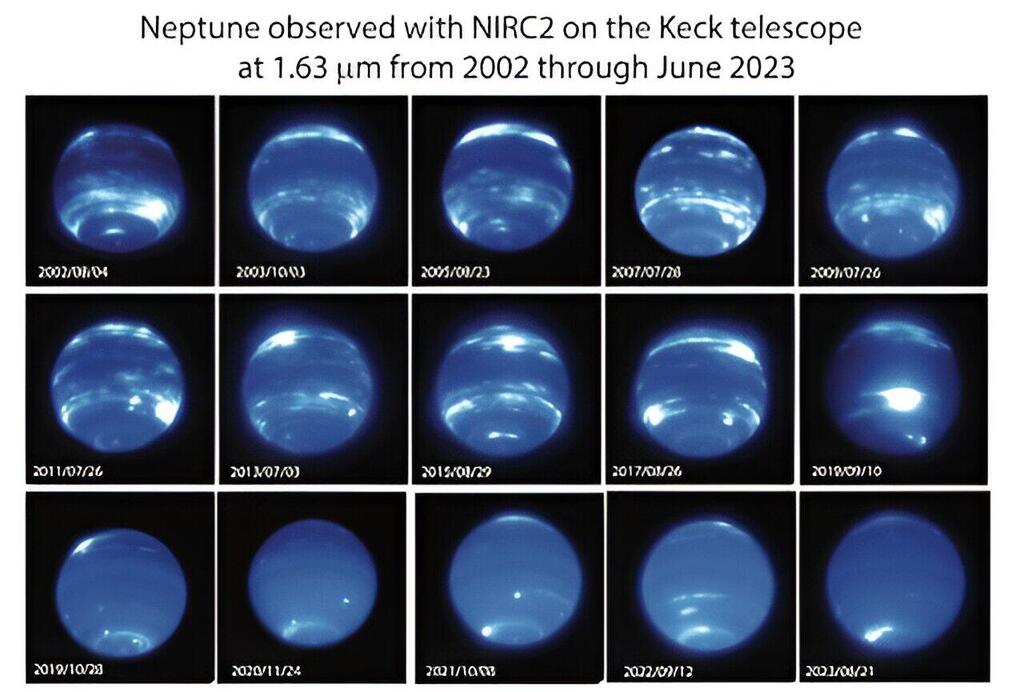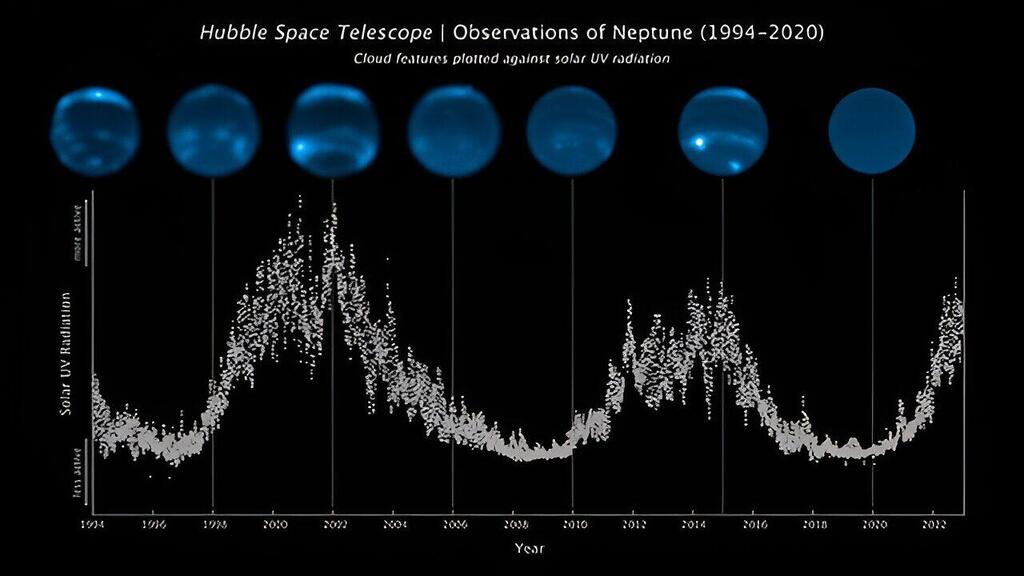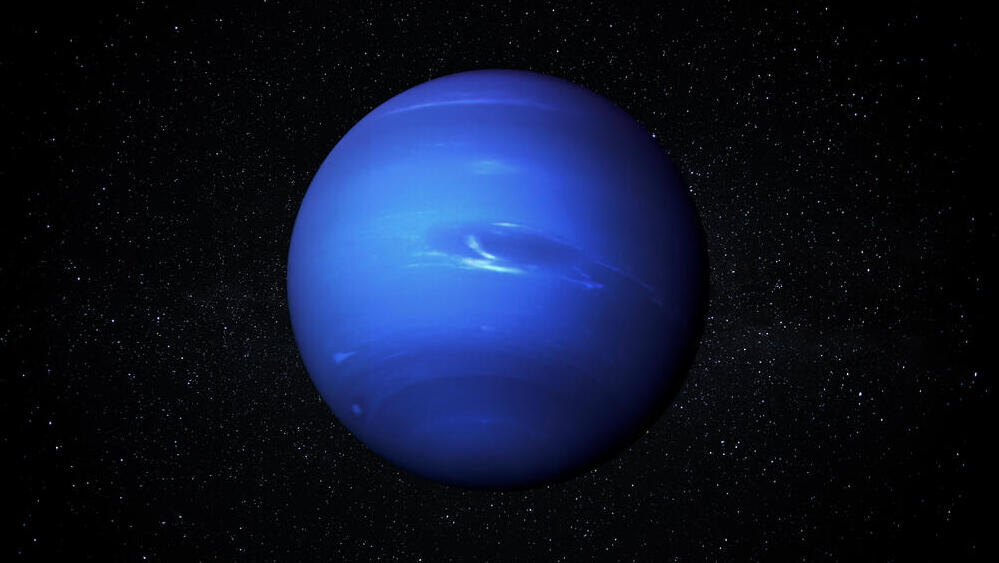Getting your Trinity Audio player ready...
For the first time in nearly three decades of observations, the clouds that used to grace Neptune, the blue giant of our solar system, have all but vanished. From 1994 to 2022, Neptune's azure visage, named after the Roman god of the sea, "Neptunus," was documented through the lenses of telescopes at the Mauna Kea Observatory in Hawaii. Alongside observations from the Yerkes Observatory and space-based telescopes like NASA's Hubble Space Telescope, it became evident that Neptune's iconic cloud cover had mostly disappeared, with the exception of those lingering in its southern latitudes.
Read more:
Findings from extensive long-term observations of Neptune have been published in the scientific journal "Icarus," revealing a surprising connection between the vanishing clouds of the distant ice giant and the solar cycle. This discovery is particularly remarkable when considering that Neptune, being the smallest and most remote of the gas giants, resides far from the Sun. It receives only 1/900th of the solar illumination that our planet Earth enjoys.
3 View gallery


Images of Neptune from 2002 through June 2023
(Photo: Imke de Pater, Erandi Chavez, Erin Redwing (UC Berkeley)/W. M. Keck Observatory)
A team of astronomers, led by researchers from the University of California, Berkeley, has made a significant discovery regarding the diminishing presence of clouds typically observed in the mid-latitude bands of Neptune, the eighth planet in our solar system, classified under the subcategory of ice giants. This reduction in cloud cover, attributed to its water and ice layer, commenced in 2019.
"I was surprised by how quickly clouds disappeared on Neptune," said Imke de Pater, emeritus professor of astronomy at UC Berkeley and senior author of the study. "We essentially saw cloud activity drop within a few months," she said.
3 View gallery


This sequence of Hubble Space Telescope images chronicles the waxing and waning of the amount of cloud cover on Neptune
(Photo: NASA, ESA, LASP, Erandi Chavez (UC Berkeley), Imke de Pater (UC Berkeley))
To track the changes in Neptune's appearance over time, Chavez and her research team examined images captured by the Keck Observatory from 2002 to 2022, archival observations from the Hubble Space Telescope dating back to 1994, and data gathered at the Lick Observatory in California during 2018 and 2019.
The images unveil a captivating correlation between Neptune's cloud cover and the solar cycle—a roughly 11-year period marked by the Sun's magnetic field undergoing a flip, akin to the tangling and untangling of a ball of yarn. This connection becomes evident through the rising count of sunspots and heightened solar flare activity. As the solar cycle advances, the Sun's turbulent behavior intensifies until it reaches its peak, at which point the magnetic field undergoes a breakdown and reverses its polarity. Subsequently, the Sun returns to a period of relative calm, only to initiate another cycle.
Researchers discovered a link between Neptune's cloud patterns and the solar cycle by analyzing 2.5 cycles of cloud activity documented across a 29-year period of observations of the distant planet. During this extensive timeframe, Neptune exhibited an increase in reflectivity in 2002, followed by dimming in 2007. Subsequently, in 2015, the planet brightened once more, only to experience a deepening of darkness in 2020, marking the lowest level of brightness ever recorded and coinciding with the disappearance of a significant portion of its cloud cover.
"It's fascinating to be able to use telescopes on Earth to study the climate of a world more than 2.5 billion miles away from us," said Carlos Alvarez, staff astronomer at Keck Observatory and co-author of the study. "Advances in technology and observations have enabled us to constrain Neptune's atmospheric models, which are key to understanding the correlation between the ice giant's climate and the solar cycle."
However, further research is imperative. For instance, while heightened UV sunlight could potentially lead to more cloud and haze formation, it might also darken these formations, consequently diminishing Neptune's overall luminosity. Storms originating from the deep reaches of Neptune's atmosphere influence cloud cover but are not directly linked to photochemically generated clouds. This aspect could introduce complexities when attempting to establish correlations with the solar cycle.
Sustained observations of Neptune remain essential to ascertain the duration of the current period characterized by the near-absence of clouds. The research team continues to monitor Neptune's cloud activity closely. Professor de Pater remarked, "We've observed an increase in cloud formations in recent Keck images taken concurrently with NASA's James Webb Space Telescope observations of the planet. These clouds were predominantly observed in the northern latitudes and at high altitudes, aligning with expectations due to the observed rise in solar UV flux over the past approximately two years."


